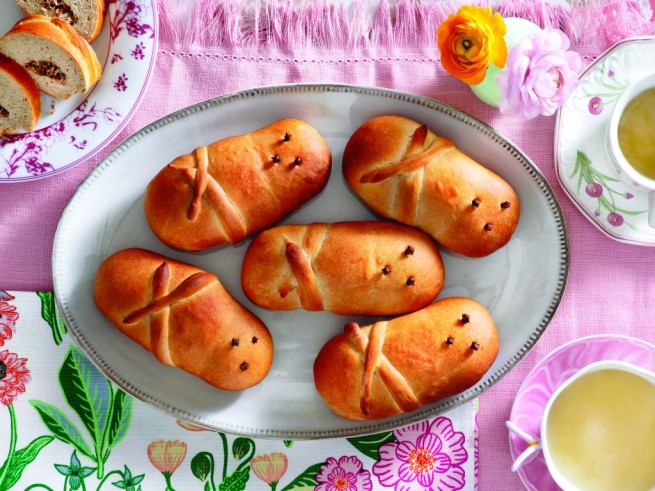Gluten is a protein found in many grains such as wheat, barley, rye and others.
Gluten has the ability to give dough elasticity, helping it rise and maintain its shape, giving the finished product a nice crumbly texture. Although gluten is not a problem for most, there are many people who are gluten intolerant. In particular, gluten is broken down in the small intestine by peptidase. However, if it is not broken down, due to decreased activity or absence of this enzyme, it deposited on the intestinal walls, mechanically or immunologically damages the villi and interferes with the absorption of nutrients. The villi typically allow food nutrients to be absorbed from the walls of the small intestine into the bloodstream. Therefore, when the villi are damaged, the intestines cannot absorb nutrients properly, so the body does not receive proper nutrition.
Iron, zinc, calcium, B vitamins and other microelements are not absorbed in this genetic disease. The disease in question is called celiac disease.
Because the body’s own immune system causes damage, Celiac disease is considered an autoimmune disease. For people with this disease, eating gluten can cause unpleasant symptoms such as bloating, diarrhea and abdominal pain. Celiac disease, in addition to its unpleasant symptoms, is also associated with other serious health consequences such as anemia, fatigue and neurological disorders.
Celiac disease is diagnosed in people of all ages, but most often in children aged 9–36 months and adults 30–40 years old. The disease affects children and adults with a genetic predisposition (genotypes HLA-DQ2 and HLA-DQ8),
How to be treated
The only treatment is permanent eliminating gluten from the diet. The treatment for celiac disease sounds simple: by completely eliminating gluten from your diet, the damage to your intestines will resolve over time and your symptoms will gradually disappear. Of course this is easier said than done. Many foods contain gluten. In particular packaged foods may contain gluten without even listing it as an ingredient.
The reason is that it is used in many food products in as a thickener and binder, flavor enhancer and protein supplement. It is mainly found in food, but can also be found in everyday products such as medicines, dietary supplements, cosmetics, etc.
8 Food Categories to Avoid
1. Cereals containing gluten:
- wheat
- barley
- rye
- wheat germ (dinkel)
- Zeas (triticum dicoccum)
- couscous.
Please note that oats are generally gluten-free, but may be contaminated with gluten during processing.
2. Bread
Most breads, crackers and tortillas contain gluten. The only way to know for sure is to read the ingredients list and check what grains were used. If you are gluten intolerant, avoid the following: white bread, whole wheat bread, rye bread, yeast bread, wheat crackers, toast, flatbread, pretzels.
3. Condiments and sauces
Although spices seem like unlikely sources of gluten, many of them, even the wildly popular ones we serve in our meals every day, contain gluten. These include: soy sauce, barbecue (sauce), various salad dressings, marinades, cream sauces, spice mixtures, malt vinegar, ketchup, ready-made mayonnaise, mustard. You can make your own seasonings using gluten-free ingredients or buy seasonings that are certified gluten-free.
4. Baking
Most baked goods are usually made from wheat flour or other grains that contain gluten. Therefore, people with gluten intolerance should avoid the following foods: cakes, biscuits, soft and hard biscuits, donuts, muffins, pancakes and waffles.
5. Pasta
This is one of the main products that is on our table almost every day. Although there are gluten-free alternatives, most traditional pasta is made from grains that contain gluten: spaghetti and other types of pasta, lasagna, wheat flour gnocchi, dumplings.
6. “Healthy Snacks”
Most are common sources of gluten. These include: muesli bars, cereal bars, cookies, muesli flakes, candies, chewing gum, chocolate with cereals.
7. Drinks
Some drinks are made with gluten-containing ingredients, so it’s important to read labels. Beverages that may contain gluten include: beer, draft wine, coffee substitutes, mixed drinks, chocolate milk (bottled cocoa milk).
8. Processed foods
Many processed foods and other popular foods may also contain gluten. These include:
- meat substitutes such as veggie burgers and hot dogs
- ready-made semi-finished meat products, canned meat, breaded fish and chicken, processed cheeses, egg substitutes
- canned soups and soup mixes;
- puddings and dessert mixes, some types of ice cream
- French fries and other fried foods
flavored tofu cheese.
7 CATEGORIES OF GLUTEN-FREE PRODUCTS
1. FRUITS AND VEGETABLES
Fruits and vegetables are naturally gluten-free. However, keep in mind that some foods, such as starchy vegetables and fruits, may contain gluten. The following are indicative options: apples, avocados, berries, bananas, citrus fruits, plums, peaches, spinach, cabbage, onions, sweet potatoes, broccoli, cauliflower, carrots, peppers, zucchini, Brussels sprouts, mushrooms.
2. LEGUMES
Legumes and bean flour do not contain gluten. They are commonly used to make alternatives to pasta and other gluten-free foods. These include lentils, all varieties of beans, chickpeas, and peas.
3. GLUTEN-FREE SEEDS AND GRAIN PRODUCTS
Although many grains are excluded from the list for people with gluten intolerance, they can still be eaten safely: corn, quinoa, millet, rice, buckwheat, amaranth, carob flour, tapioca, potatoes, chestnuts. As well as gluten-free bread, crackers and other baked goods from the above cereals. Preference should be given to products marked “gluten-free” on the label.
4. ANIMAL PROTEINS
Animal proteins such as the following are naturally gluten-free: eggs, meat, poultry, fish. As well as dairy products such as yogurt and cheese, cream, fresh cheese (cottage cheese, anfotiro).
5. DRIED FRUITS
Nuts are gluten-free and contain nutrient-rich fats. You can also make gluten-free flour from them. Good selection of nuts and nut oils: pumpkin seeds, sunflower seeds, cashews, almonds, peanuts, walnuts, pecans, hazelnuts, Brazil nuts.
6. SAUCES AND SEASONINGS
The following condiments and sauces are safe for those on a gluten-free diet: apple cider vinegar, fresh herbs (dill, parsley), spices, pesto, hummus, guacamole, sauerkraut, tahini.
7. HEALTHY FATS AND OILS
Most fat sources, such as the following, are gluten-free: olive oil, avocado oil, peanut butter, almond butter, coconut, coconut oil, butter, margarine.
There are many gluten-free products on the market that are now preferred even by people who do not have symptoms of celiac disease. The reason is that a gluten-free diet has sometimes been suggested as a means of relieving other conditions such as irritable bowel disease, rheumatoid arthritis and diabetes, and as a means of weight loss.







More Stories
Vaccine to combat antibiotic resistance
Oral health: increased risk of cancer
Avian influenza virus found in cow's milk